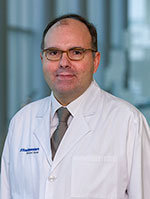EEG helps scientists predict epileptic seizures minutes in advance


Elizabeth Delacruz can’t crawl or toddle around like most youngsters nearing their second birthday.
A rare metabolic disorder that decimated her mobility has also led to cortical blindness – her brain is unable to process images received from an otherwise healthy set of brown eyes. And multiple times a day Elizabeth suffers seizures that continually reduce her brain function.
But a few months ago I heard her say, ‘Mama,’ and I started to cry,
said Carmen Mejia, a subtle quaver in her voice as she recalled the joy of hearing her daughter. That’s the first time she said something.

Ms. Mejia realizes it may also be the last, unless doctors can find a way to detect and prevent the epileptic seizures stemming from a terminal disease called pyruvate dehydrogenase deficiency (PDHD) – which occurs when mitochondria don’t provide enough energy for the cells.
A UT Southwestern study gives parents like Ms. Mejia renewed hope for their children: By monitoring the brain activity of a specific cell type responsible for seizures, scientists can predict convulsions at least four minutes in advance in both humans and mice. The research further shows that an edible acid called acetate may effectively prevent seizures if they are detected with enough notice.
Although the prediction strategy cannot yet be used clinically – a mobile technology for measuring brain activity would have to be developed – it signifies a potential breakthrough in a field that had only been able to forecast seizures a few seconds ahead.

Many of the families I meet with are not just bothered by the seizures. The problem is the unpredictability, the not knowing when and where a seizure might occur,
said Dr. Juan Pascual, a pediatric neurologist with UT Southwestern’s Peter O’Donnell Jr. Brain Institute who led the study published recently in Science Translational Medicine. We’ve found a new approach that may one day solve this issue and hopefully help other scientists track down the root of seizures for many kinds of epilepsy.
The critical difference between the study and previous efforts was debunking the long-held belief among researchers that most cells in epilepsy patients have malfunctioning mitochondria.
In fact, Dr. Pascual’s team spent a decade developing a PDHD mouse model that enabled them to first discover the key metabolic defect in the brain and then determine only a single neuron type was responsible for seizures as the result of the metabolic defect. They honed in on these neurons’ electrical activity with an electroencephalogram (EEG) to detect which brainwave readings signaled an upcoming seizure.

It’s much more difficult to predict seizures if you don’t know the cell type and what its activity looks like on the EEG,
said Dr. Pascual, a Professor of Neurology & Neurotherapeutics, Pediatrics, and Physiology with the O’Donnell Brain Institute and the Eugene McDermott Center for Human Growth and Development. Until this finding, we thought it was a global deficiency in the cells and so we didn’t even know to look for a specific type.
The study, supported by the National Institutes of Health, The Once Upon a Time Foundation, and patient donations, shows how a PDHD mouse model helped scientists trace the seizures to inhibitory neurons near the cortex that normally keep the brain’s electrical activity in check.

Scientists then tested a method of calculating when seizures would occur in mice and humans by reviewing EEG files and looking for decreased activity in energy-deficient neurons. Their calculations enabled them to forecast 98 percent of the convulsions at least four minutes in advance.
Dr. Pascual said the discovery that a single cell type can be used to forecast seizures is a paradigm-shifting finding that may apply to all mitochondrial diseases and related epilepsies.
Ms. Mejia hopes that Dr. Pascual’s work can someday change the prognosis for PDHD. It’s so hard to see her go through this,
Ms. Mejia said. Every time she has a seizure, her brain is getting worse. I still hope one day she can get a treatment that could stop all this and make her life better.

